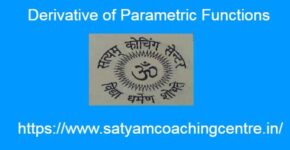Straight Line in Class 11
1.कक्षा 11 में सरल रेखा (Straight Line in Class 11),सरल रेखा कक्षा 11 (Straight Line Class 11):
कक्षा 11 में सरल रेखा (Straight Line in Class 11) के इस आर्टिकल में ढाल अन्तःखण्ड,बिन्दु ढाल रूप,दो बिन्दु रूप,अन्तःखण्ड रूप,लम्ब रूप व व्यापक समीकरण पर आधारित सवालों को हल करेंगे।
आपको यह जानकारी रोचक व ज्ञानवर्धक लगे तो अपने मित्रों के साथ इस गणित के आर्टिकल को शेयर करें।यदि आप इस वेबसाइट पर पहली बार आए हैं तो वेबसाइट को फॉलो करें और ईमेल सब्सक्रिप्शन को भी फॉलो करें।जिससे नए आर्टिकल का नोटिफिकेशन आपको मिल सके । यदि आर्टिकल पसन्द आए तो अपने मित्रों के साथ शेयर और लाईक करें जिससे वे भी लाभ उठाए । आपकी कोई समस्या हो या कोई सुझाव देना चाहते हैं तो कमेंट करके बताएं।इस आर्टिकल को पूरा पढ़ें।
Also Read This Article:-Various Forms of Equation of Line 11th
2.कक्षा 11 में सरल रेखा के साधित उदाहरण (Straight Line in Class 11 Solved Examples):
Example:1.k के मान ज्ञात कीजिए जबकि रेखा (k-3) x-\left(k-k^2\right) y+k^2-7 k+6=0
Example:1(a).x-अक्ष के समान्तर है।
Solution:x-अक्ष के समान्तर m=0
(k-3) x-\left(4-k^2\right) y+k^2-7 k+6=0 \\ m=-\frac{x \text { का गुणांक }}{y \text { का गुणांक }} \\ =-\frac{(k-3)}{-\left(4-k^2\right)} \\ \Rightarrow \frac{(k-3)}{k-k^2}=0 \Rightarrow k=3
Example:1(b).y-अक्ष के समान्तर है।
Solution:y-अक्ष के समान्तर m=\infty \\ (k-3) x-\left(4-k^2\right)+k^2-7 k+6=0 \\ m=-\frac{x \text { का गुणांक }}{y \text { का गुणांक }} \\ \Rightarrow-\frac{(k-3)}{-\left(4-k^2\right)}=\infty \\ \Rightarrow \frac{k-3}{4-k^2}=\frac{1}{0} \\ \Rightarrow 4-k^2=0 \Rightarrow k=\pm 2
Example:1(c).मूलबिन्दु से जाती है।
Solution: (k-3) x-\left(4-k^2\right) y+k^2-7 k+6=0
मूलबिन्दु (0,0) से जाती है अतः
\Rightarrow(k-3)(0)-\left(4-k^2\right)(0)+k^2-7 k+6=0 \\ \Rightarrow k^2-6 k-k+6=0 \\ \Rightarrow k(k-6)-1(k-6)=0 \\ \Rightarrow(k-1)(k-6)=0 \\ \Rightarrow k=1,6
Example:2.और p के मान ज्ञात कीजिए यदि समीकरण x \cos \theta+y \sin \theta=p रेखा \sqrt{3} x+y+2=0 का लम्ब रूप है।
Solution: x \cos \theta+y \sin \theta-p=0 \ldots(1) \\ \sqrt{3} x+y+2=0 \ldots(2)
(1) व (2) एक ही रेखा के समीकरण हैं।अतः (2) को लम्ब रूप में परिवर्तित करने परः
\Rightarrow \sqrt{(\sqrt{3})^2+(1)^{2}}=\sqrt{3+1}=2 का भाग देने परः
अतः 2 \theta=210^{\circ}, p=1 \\ \theta=\frac{7 \pi}{6}, p=1
Example:3.उन रेखाओं के समीकरण ज्ञात कीजिए जिनके अक्षों से कटे अन्तःखण्डों का योग और गुणनफल क्रमशः 1 और – 6 है।
Solution: a+b=1 \ldots(1) \\ a b=-6 \\ a-b=\sqrt{(a+b)^2-4 a b} \\ =\sqrt{(1)^2-(-6) \times 4} \\ =\sqrt{1+24} \\ =\sqrt{25} \\ \Rightarrow a-b=\pm 5
a-b=5 तथा a+b=1 तो a=3,b=-2
जब a-b=-5 तथा a+b=1 तो a=-2,b=3
अतः रेखा के समीकरणः
\frac{x}{a}+\frac{y}{b}=1 \\ \Rightarrow \frac{x}{3}-\frac{y}{2}=1 \\ \Rightarrow 2 x-3 y =6 \\ \frac{x}{-2}+\frac{y}{3}=1 \\ \Rightarrow 3 x-2 y=-6 \\ \Rightarrow-3 x+2 y=6
Example:4.मूलबिन्दु से बिन्दुओं (\cos \theta, \sin \theta) और (\cos \phi, \sin \phi) को मिलाने वाली रेखा की लाम्बिक दूरी ज्ञात कीजिए।
Solution: (\cos \theta, \sin \theta) तथा (\cos \phi, \sin \phi) को मिलाने वाली रेखा का समीकरणः
y-y_1 =\frac{y_2-y_1}{x_2-x_1}\left(x-x_1\right) \\ \Rightarrow y-\sin \theta =\frac{\sin \phi-\sin \theta}{\cos \phi-\cos \theta}(x-\cos \theta) \\ \Rightarrow (\cos \phi-\cos \theta) y-\sin \theta(\cos \phi-\cos \theta)= (\sin \phi-\sin \theta) x-\cos \theta(\sin \phi-\sin \theta) \\ \Rightarrow (\sin \phi-\sin \theta) x-(\cos \phi-\cos \theta) y-\sin \theta \cos \phi - \cos \theta \sin \phi=0 \\ \Rightarrow(\sin \phi-\sin \theta) x-(\cos \phi-\cos \theta) y-\sin (\theta+\phi)=0
(0,0) से लम्ब की लम्बाईः
\Rightarrow d=\left| \frac{(\sin \phi-\sin \theta)(0)-(\cos \phi-\cos \theta)(0)-\sin (\theta+\phi)}{\sqrt{(\sin \phi-\sin \theta)^2+(\cos \phi-\cos \theta)^2}} \right| \\ =\left|\frac{-(\sin \theta+\phi)}{\sqrt{\sin ^2 \phi+\sin ^2 \theta-2 \sin \theta \sin \phi+\cos^2 \phi+\cos ^2 \theta-2 \cos \theta \cos \phi}}\right| \\ =\left|\frac{-\sin (\theta+\phi)}{\sqrt{1+1-2 \cos (\phi-\theta)}}\right| \\ =\left|\frac{-\sin (\theta+\phi)}{\sqrt{2[1-\cos (\phi-\theta)]}}\right| \\ =\frac{|\sin (\theta+\phi)|}{\sqrt{2 \times 2 \sin ^2\left(\frac{\phi-\theta}{2}\right) \mid}} \\ =\frac{|\sin (\theta+\phi)|}{2 \mid \sin \left(\frac{\phi-\theta}{2}\right)\mid}
Example:5.y-अक्ष पर कौनसे बिन्दु ऐसे हैं जिनकी रेखा \frac{x}{3}+\frac{y}{4}=1 से दूरी 4 इकाई है।
Solution:y-अक्ष पर x=0 अतः वह बिन्दु माना (0,y) है।
रेखा \frac{x}{3}+\frac{y}{4}=1 \\ \Rightarrow 4 x+3 y-12=0 \ldots(1)
रेखा (1) पर (0,y) से दूरीः
\left|\frac{4(0)+3 y-12}{\sqrt{(4)^2+(3)^2}}\right|=4 \\ \Rightarrow \left|\frac{3 y+2}{\sqrt{16+9}} \right| =4 \\ \Rightarrow |3 y-12|=20 \\ \Rightarrow 3 y-12=\pm 20 \\ \Rightarrow 3 y=12 \pm 20 \\ \Rightarrow y=\frac{32}{3},-\frac{8}{3}
अतः y-अक्ष पर वह बिन्दु हैः \left(0, -\frac{8}{3}\right)\left(0, \frac{32}{3}\right)
Example:6.रेखाओं x-7y+5=0 और 3x+y=0 के प्रतिच्छेद बिन्दु से खींची गई और y-अक्ष के समान्तर रेखा का समीकरण ज्ञात कीजिए।
Solution:x-7y+5=0 …. (1)
3x+y=0 …. (2)
(1) व (2) का प्रतिच्छेद बिन्दुः
22x+5=0
\Rightarrow x=-\frac{5}{22}
y-अक्ष के समान्तर रेखा का समीकरणः x=-\frac{5}{22}
Example:7.रेखा \frac{x}{4}+\frac{y}{6}=1 पर लम्ब उस बिन्दु से खींची गई रेखा का समीकरण ज्ञात कीजिए जहाँ यह रेखा y-अक्ष से मिलती है।
Solution:y-अक्ष पर x=0
\frac{x}{4}+\frac{y}{6}=1 \Rightarrow y=6
अतः बिन्दु (0,6)
रेखा की प्रवणता m=-\frac{x \text { का गुणांक }}{y \text { का गुणांक }} \\ -\frac{\frac{1}{4}}{\frac{1}{6}} \\ \Rightarrow m=-\frac{3}{2}
लम्ब रेखा की प्रवणता=-\frac{2}{3}
लम्ब रेखा का समीकरणः y-y_0=m\left(x-x_0\right) \\ \Rightarrow y-6=-\frac{2}{3}(x-0) \\ \Rightarrow 3 y-18=2 x \\ \Rightarrow 2x-3y+18=0
Example:8.रेखाओं y-x=0,x+y=0 और x-k=0 से बने त्रिभुज का क्षेत्रफल ज्ञात कीजिए।
Solution:y-x=0 … (1)
x+y=0 …. (2)
x-k=0 ….. (3)
(1) व (2) का प्रतिच्छेद बिन्दु (0,0)
(2) व (3) का प्रतिच्छेद बिन्दु (k,-k)
(1) व (3) का प्रतिच्छेद बिन्दु (k,k)
अतः त्रिभुज का क्षेत्रफल=\frac{1}{2} \left| x_1\left(y_2-y_3\right)+x_2\left(y_{3}-y_{1}\right)+x_3\left(y_1-y_2\right) \right| \\ =\frac{1}{2} \mid 0(-k-k)+k(k-0)+k(0+k) \mid \\=\frac{1}{2} \times 2 k^2=k^2 वर्ग इकाई
Example:9.p का मान ज्ञात कीजिए जिससे तीन रेखाएँ 3x+y-2=0,px+2y-3=0 और 2x-y-3=0 एक बिन्दु पर प्रतिच्छेद करें।
Solution:3x+y-2=0… (1)
px+2y-3=0 …. (2)
2x-y-3=0 …. (3)
समीकरण (1) व (3) का प्रतिच्छेद बिन्दुः
x=1,y=-1
(1,-1)
समीकरण (2) को यह बिन्दु सन्तुष्ट करना चाहिएः
p(1)+2(-1)-3=0
\Rightarrow p=5
Example:10.यदि तीन रेखाएँ जिनके समीकरण y=m_1 x+c_1,y=m_2 x+c_2 और y=m_3 x+c_3 हैं तो दिखाइए कि m_1\left(c_2-c_3\right)+m_2\left(c_3-c_1\right)+m_3\left(c_1-c_2\right)=0
Solution: y=m_1 x+c_1 \ldots(1) \\ y=m_2 x+c_2 \ldots(2) \\ y=m_3 x+c_3 \ldots(3)
समीकरण (1) व (2) सेः
m_1 x+c_{1}=m_2 x+c_2 \\ \Rightarrow \left(m_1-m_2\right) x=c_2-c_{1} \Rightarrow x=\frac{c_2-c_{1}}{m_1-m_2} \\ y=m_1\left(\frac{c_2-c_{1}}{m_1-m_2}\right)+c_{1} \\ \Rightarrow y=\frac{m_1 c_2-m_2 c_1}{m_1-m_2} \\ \left(\frac{c_2-c_{1}}{m_1-m_2 } ,\frac{m_1 c_{2}-m_2 c_{1}}{m_1-m_2}\right)
तीनों रेखाएँ संगामी होंगी यदि यह बिन्दु समीकरण (3) को सन्तुष्ट करेगाः
\frac{m_1 c_2-m_2 c_1}{m_1-m_2}=m_3\left(\frac{c_2-c_1}{m_1-m_2}\right)+c_3 \\ \Rightarrow m_1 c_2-m_2 c_1=m_3 c_2-m_3 c_{1}+m_1 c_3-m_2 c_3 \\ \Rightarrow m_1 c_2-m_1 c_3+m_2 c_3-m_2 c_1+m_3 c_1-m_3 c_2=0 \\ \Rightarrow m_1\left(c_2-c_3\right)+m_2\left(c_3-c_{1}\right)+m_3\left(c_1-c_2\right)=0
Example:11.बिन्दु (3,2) से जानेवाली उस रेखा का समीकरण ज्ञात कीजिए जो रेखा x-2y=3 से 45° का कोण बनाती है।
Solution: x-2 y=3 \Rightarrow m_1=\frac{1}{2} \\ m_2=?, \theta=45^{\circ} \\ \tan \theta=\left|\frac{ m_2- m_1}{1+m_1 m_2}\right| \\ \Rightarrow \tan 45^{\circ}=\left|\frac{m_2-\frac{1}{2}}{1+\frac{1}{2} \times m_2}\right| \\ \Rightarrow 1=\left| \frac{2 m_2-1}{2+m_2} \right| \\ \Rightarrow \left(2+m_2\right)= \pm\left(2 m_2-1\right) \\ \Rightarrow 2+m_2=2 m_2-1 तथा 2+m_2=-2 m_2+1 \\ \Rightarrow m_2=3 तथा 3 m_2=-1 \\ \Rightarrow m_2=3 तथा m_2=-\frac{1}{3}
अतः (3,2) से जाने वाली रेखा का समीकरणः
y-y_0=m_2\left(x-x_0\right) \\ \Rightarrow y-2=3(x-3) तथा y-2=-\frac{1}{3}(x-3) \\ \Rightarrow 3 x-y=7, \quad x+3 y=9
Example:12.रेखाओं 4x+7y-3=0 और 2x-3y+1=0 के प्रतिच्छेद बिन्दु से जाने वाली रेखा का समीकरण ज्ञात कीजिए जो अक्षों से समान अन्तःखण्ड बनाती है।
Solution:4x+7y-3=0 … (1)
2x-3y+1=0 ……(2)
(1) व (2) का प्रतिच्छेद बिन्दुः
\begin{array}{ll} 4 x+7 y-3=0 \ldots(1) \\ 4 x-6 y+2=0 \ldots(3) \\ - \quad + \quad - \quad \\ \hline 13 y=5 \Rightarrow y=\frac{5}{13} \end{array}
(1) में रखने परः
4 x+7\left(\frac{5}{13}\right)-3=0 \Rightarrow 4 x=3-\frac{35}{13} \\ \Rightarrow x=\frac{1}{13} \\ \left(\frac{1}{13}, \frac{5}{13}\right)
रेखा का अन्तःखण्ड रूपः
\frac{x}{a}+\frac{y}{b}=1
अक्षों पर समान अन्तःखण्ड काटती है अतः a=b
\frac{x}{a}+\frac{y}{a}=1 \ldots(3)
यह \left(\frac{1}{13}, \frac{5}{13}\right) से गुजरती है अतः
\frac{1}{13}+\frac{5}{13}=a \Rightarrow \frac{1+5}{13}=a \\ \Rightarrow a=\frac{6}{13}
(3) में मान रखने परः
x+y=a \\ \Rightarrow x+y=\frac{6}{13} \\ \Rightarrow 13 x+13 y=6
Example:13.दर्शाइए कि मूलबिन्दु से जाने वाली और रेखा y=mx+c से \theta कोण बनाने वाली उस रेखा का समीकरण \frac{y}{x}=\pm \frac{m \pm \tan \theta}{1 \mp m \tan \theta} है।
Solution:मूलबिन्दु से जाने वाली तथा प्रवणता वाली रेखा का समीकरणः
y-y_0=m \left(x-x_0\right) \\ \Rightarrow y-0=m(x-x_{0}) \\ \Rightarrow y=m_1 x \\ \Rightarrow \frac{y}{x}=m_1 \ldots(1)
दी हुई रेखा y=mx+c के साथ रेखा (1) कोण बनाती है अर्थात् m_{2}=m \\ \tan \theta=\pm \frac{m_2-m_1}{1+m_1 m_2} \\ \Rightarrow \tan \theta=\pm \frac{m-m_1}{1+m_1} \\ \Rightarrow \tan \theta+m m_1 \tan \theta=\pm m \mp m_1 \\ \Rightarrow -m m_1 \tan \theta \mp m_1=\mp m+\tan \theta \\ \Rightarrow m_1=\frac{\mp m+\tan \theta}{-m \tan \theta \mp 1} \\ m_{1}=\pm \frac{m \pm \tan \theta}{1 \mp m \tan \theta} \\ m_1 का मान समीकरण (1) में रखने परः
\frac{y}{x}=\pm \frac{m \pm \tan \theta}{1 \mp m \tan \theta}
Example:14.(-1,1) और (5,7) को मिलाने वाली रेखाखण्ड को रेखा x+y=4 किस अनुपात में विभाजित करती है?
Solution:माना m_{1}:m_{2} में विभाजित करती है।
x=\frac{m_1 x_2+m_2 x_1}{m_1+m_2}, y=\frac{m_1 y_2+m_2 y_1}{m_1+m_2} \\ \Rightarrow x =\frac{m_1(5)+m_2(-1)}{m_1+m_2}, y=\frac{m_1(7)+m_2(1)}{m_1+m_2} \\ \Rightarrow x =\frac{5 m_1-m_2}{m_1+m_2}, y=\frac{7 m_1+m_2}{m_1+m_2}
x+y=4 में मान रखने परः
\Rightarrow \frac{5 m_1-m_2}{m_1+m_2}+\frac{7 m_1+m_2}{m_1+m_2}=4 \\ \Rightarrow 5 m_1-m_2+7 m_1+m_2=4 m_1+4 m_2 \\ \Rightarrow 5 m_1-4 m_1+7 m_1=4 m_2 \\ \Rightarrow 8 m_1=4 m_2 \\ \Rightarrow m_1 : m_2=1 : 2
Example:15.बिन्दु (1,2) से रेखा 4x+7y+5=0 की 2x-y=0 के अनुदिश दूरी ज्ञात कीजिए।
Solution: माना 2x-y=0 के अनुदिश 4x+7y+5=0 पर बिन्दु \left(x_1, y_1\right) है।
(1,2) व \left(x_1, y_1\right) को मिलाने वाली रेखा की प्रवणता=\frac{y_1-2}{x_1-1}=2 \\ \Rightarrow 2 x_1-y_1=0 \ldots(1)
बिन्दु \left(x_1, y_1\right) रेखा 4x+7y+5=0 पर स्थित हैः
\begin{array}{ll} 4 x_1+7 y_1+5=0 \cdots(2) \\ 14 x_1-7 y_1=0 \text{[(1) से]} \\ \text{ जोड़ने पर }\\ \hline 18 x_{1}+5=0 \end{array} \\ \Rightarrow x_{1}=-\frac{5}{18}
(1) में रखने परः y_{1}=-\frac{5}{9}
अतः (1,2) ,\left(-\frac{5}{18},-\frac{5}{9} \right) के बीच दूरी
=\sqrt{\left(1+\frac{5}{18}\right)^2+\left(2+\frac{5}{9}\right)^2} \\ =\sqrt{\left(\frac{23}{9}\right)^2 \times \frac{1}{4}+\left(\frac{23}{9}\right)^2} \\ =\frac{23}{9} \sqrt{\frac{1}{4}+1}=\frac{23 \sqrt{5}}{18}
Example:16.बिन्दु (-1,2) से खींची जा सकने वाली उस रेखा की दिशा ज्ञात कीजिए जिसका रेखा x+y=4 से प्रतिच्छेद बिन्दु दिए बिन्दु से 3 इकाई की दूरी पर है।
Solution:x+y=4 पर प्रतिच्छेद बिन्दु (x_1,y_1) है।
अतः x_1+y_1=4 \Rightarrow y_1=4-x_1 \ldots(1)
(-1,2) तथा (x_1,y_1) के बीच दूरीः
\left(x_1+1\right)^2+\left(y_1-2\right)^2=3^2 \\ \Rightarrow \left(x_1+1\right)^2+\left(4-x_1-2\right)^2=9 [(1) से]
\Rightarrow x_1^2+2 x_1+1+4-4 x_1+x_1^2=9 \\ \Rightarrow x_1^2-x_1-2=0 \\ \Rightarrow x_1^2-2 x_1+x_1-2=0 \\ \Rightarrow x_1\left(x_1-2\right)+1\left(x_1-2\right)=0 \\ \Rightarrow \left(x_1-2\right)\left(x_1+1\right)=0 \\\ \Rightarrow x_1=2,-1 अतः y_1 =2,5
अतः प्रतिच्छेद बिन्दु (2,2) या (-1,5) है।
(-1,2) व (2,2) तथा (-1,2) व (-1,5) को मिलाने वाली रेखा की प्रवणताः
m=\frac{y_2-y_1}{x_2-y_1}=\frac{2-2}{2+1}=0
अथवा \frac{5-2}{-1+1}=\infty
अतः रेखा x-अक्ष के समान्तर अथवा x-अक्ष के लम्बवत होगी।
Example:17.समकोण त्रिभुज के कर्ण के अंतय बिन्दु (1,3) और (-4,1) है।त्रिभुज के पाद (legs) (समकोणीय भुजाओं) के समीकरण ज्ञात कीजिए जो अक्षों के समान्तर हैं।
Solution:y-अक्ष के समान्तर तथा (1,3) से गुजरने वाली रेखा का समीकरणः
y-y_0=m\left(x-x_0\right) \\ m=\infty=\frac{1}{0} \\ \Rightarrow y-3=\frac{1}{0}(x-1) \Rightarrow x=1
x-अक्ष के समान्तर तथा (-4,1) से गुजरने वाली रेखा का समीकरणः
m=0 \\ y-1=0(x+4) \Rightarrow y=1
अतः x=1,y=1
Example:18.किसी बिन्दु के लिए रेखा को दर्पण मानते हुए बिन्दु (3,8) का रेखा x+3y=7 में प्रतिबिम्ब ज्ञात कीजिए।
Solution:माना x+3y=7 पर मध्य बिन्दु \left(x_1, y_1\right) है।
प्रवणता m_{1}=-\frac{1}{3}
अतः लम्ब रेखा की प्रवणता=m_{2} \\ m_1 m_2=-1 \Rightarrow\left( -\frac{1}{3} \right) m_2=-1\\ \Rightarrow m_2=3 \\ \frac{y_1-8}{x_1-3}=3 \Rightarrow 3 x_1-y_1=1 \ldots(1)
बिन्दु \left(x_1, y_1\right), रेखा x+3y=7 पर स्थित है अतः
x_1+3 y_1=7 \ldots(2)
(1) व (2) को हल करने परः x_{1}=1,y_{1}=2
माना दर्पण प्रतिबिम्ब के निर्देशांक \left(x_{2}, y_{2}\right) है
1=\frac{x_2+3}{2} \Rightarrow x_1=-1 \\ 2=\frac{y_2+8}{2} \Rightarrow y_2=-4
अतः दर्पण प्रतिबिम्ब (-1,-4) है।
उपर्युक्त उदाहरणों के द्वारा कक्षा 11 में सरल रेखा (Straight Line in Class 11),सरल रेखा कक्षा 11 (Straight Line Class 11) को समझ सकते हैं।
3.कक्षा 11 में सरल रेखा पर आधारित सवाल (Questions Based on Straight Line in Class 11):
(1.)बिन्दु P(2,3) से गुजरने वाली और x-अक्ष से 45° का कोण बनाने वाली रेखा एक अन्य रेखा \sqrt{2} x+3 y=9 को बिन्दु Q पर प्रतिच्छेद करती है।दूरी PQ ज्ञात कीजिए।
(2.)बिन्दु (a,b) तथा (a’,b’) के बीच दूरी एवं (-a, b) तथा (a’,-b’) के बीच की दूरी को समद्विभाजित करने वाली रेखा का समीकरण ज्ञात कीजिए।
उत्तर (Answers):(1)PQ=\frac{4 \sqrt{2}}{3+\sqrt{2}}
(2.)2b’x-2ay=a’b’-ab
उपर्युक्त सवालों को हल करने पर कक्षा 11 में सरल रेखा (Straight Line in Class 11),सरल रेखा कक्षा 11 (Straight Line Class 11) को ठीक से समझ सकते हैं।
Also Read This Article:-General Equation of Line Class 11
4.कक्षा 11 में सरल रेखा (Frequently Asked Questions Related to Straight Line in Class 11),सरल रेखा कक्षा 11 (Straight Line Class 11) से सम्बन्धित अक्सर पूछे जाने वाले प्रश्नः
प्रश्नः1.सरल रेखा की संकल्पना का प्रयोग करते हुए तीन बिन्दुओं के संरेख होने को कैसे सिद्ध करें? (How to Prove the Collinear of Three Points Using the Concept of a Straight Line?):
उत्तरःदो समान्तर रेखाओं की ढाल समान होती है।यदि समान ढाल वाली दो रेखाएँ एक ही बिन्दु से होकर जाती है तो आवश्यक रूप से वे संपाती (coincident) होती है।अतः तीन बिन्दु A, B, C संरेख होंगे यदि
AB की ढाल=BC की ढाल
प्रश्नः2.सरल रेखा से क्या तात्पर्य है? ( What Do You Mean by Straight Line?):
उत्तरःकोई सरल रेखा बिन्दुओं का समुच्चय है।अतः दो बिन्दुओं के बीच की दूरी को रेखा या सरल रेखा कहते हैं।
प्रश्नः3.दो रेखाओं में से एक रेखा y-अक्ष के समान्तर हो तो उनके बीच कोण कैसे ज्ञात करते हैं? (If One of Two Lines is Parallel to the y-axis then How is the Angle Between Them Determined?):
उत्तरःदो रेखाओं के समीकरण a_1 x+b_1 y =c_{1} \text{ एवं } a_2 x+b_2 y =c_{2} में से एक रेखा y-अक्ष के समान्तर हो तो उनके मध्य कोण ज्ञात करने के लिए सूत्र \tan \theta=\pm\left[\frac{a_2 b_1-a_1 b_2}{a_1 a_2+b_1 b_2}\right] का प्रयोग नहीं करते क्योंकि इस स्थिति में \tan \theta का मान अनिर्धाय होता है।इस स्थिति में रेखाओं के मध्य का कोण निम्नलिखित सूत्र से ज्ञात करते हैंः
\tan \theta=\pm\left(\frac{b_1}{a_1}\right)
उपर्युक्त प्रश्नों के उत्तर द्वारा कक्षा 11 में सरल रेखा (Straight Line in Class 11),सरल रेखा कक्षा 11 (Straight Line Class 11) के बारे में ओर अधिक जानकारी प्राप्त कर सकते हैं।
| No. | Social Media | Url |
|---|---|---|
| 1. | click here | |
| 2. | you tube | click here |
| 3. | click here | |
| 4. | click here | |
| 5. | Facebook Page | click here |
| 6. | click here |
Straight Line in Class 11
कक्षा 11 में सरल रेखा (Straight Line in Class 11)
Straight Line in Class 11
कक्षा 11 में सरल रेखा (Straight Line in Class 11) के इस आर्टिकल में ढाल अन्तःखण्ड,
बिन्दु ढाल रूप,दो बिन्दु रूप,अन्तःखण्ड रूप,लम्ब रूप व व्यापक समीकरण पर
आधारित सवालों को हल करेंगे।
Related Posts
About Author
Satyam
About my self I am owner of Mathematics Satyam website.I am satya narain kumawat from manoharpur district-jaipur (Rajasthan) India pin code-303104.My qualification -B.SC. B.ed. I have read about m.sc. books,psychology,philosophy,spiritual, vedic,religious,yoga,health and different many knowledgeable books.I have about 15 years teaching experience upto M.sc. ,M.com.,English and science.








